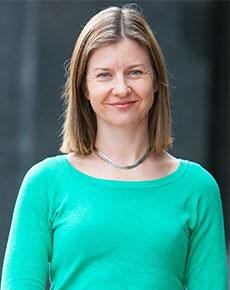Opinion: Hidden dangers of the generic ‘he’

The use of the generic ‘he’ can be seen across many levels of New Zealand society, and this impacts on what we expect of our young girls and boys, writes Sharyn Davies, Associate Professor in the School of Social Sciences and Public Policy at AUT University.
Once we start thinking about everyday gender terminology we begin to see how by the age of three children talk about the male as the default gender. We should be worried about this general universal dismissal of ‘she’ as a gender descriptor – its underuse has wide reaching implications.
These implications include a dismissal of women professionals. As soon as an engineer is mentioned, the person filling that role is imagined as a man. Astronauts, surgeons, farmers are all traditionally, stereotypically imagined as men; nurses, carers, sex workers are all imagined as women. People have to offer information to correct such assumptions – it was a female astronaut, a woman farmer, or it was a male nurse.
If girls (or boys) can’t be imagined holding these positions in a generic way, it builds our perception that these are not jobs for women (or men). We do not have readily used gender neutral terms for occupations like fisherman and firemen and unlike Indonesian for example, English does not have gender neutral pronouns. The generic ‘he’ is limiting women’s career opportunities. We should be worried about what little is being done to address this lack of gender neutral terminology.
I was recently watching an episode of Country Calendar, that stalwart representation of rural New Zealand life, and I was struck by the way sexism, more specifically that preference for ‘he’ over ‘she’, creeps into our everyday. This particular episode was about a horse breeder who was greeting a truck bringing back a prized mare after she’d had a wee frolic with a stud. When asked if the mare was a good breeder, the reply was, ‘Yeah he’s a winner’. It could have been a slip of the tongue but the more likely explanation is that ‘he’ is a default for everyone, regardless of their actual sex.
The preference for ‘he’ can be seen in many everyday situations. Some examples to illustrate this stubborn preference: eight out of ten of the randomly selected children’s stories I get out of the library each week have male protagonists, most of the dominant characters in children’s movies like Big Hero 6, The Smurfs, Rio, Garfield, Finding Nemo, Despicable Me, and Planes, are male. Even Frozen, while it allows for a feminist reading, has more male than female characters.
Take the card game ‘Rat a Tat Cat’, which has been endorsed by Mensa, the largest and oldest high IQ society in the world which sees itself as free from all racial, political or religious distinctions. The instructions read: ‘Once the player has received his cards… He then collects two more cards’. Should my daughter and I sit on the side-line while my son and husband play?
Recently, while we were in Cambridge, my children brought home from school a newsletter stressing the importance of getting at least 12 hours sleep per night: “It is best for the child if he gets 12 hours sleep …. His behaviour will be much better at school.”
As a grown woman, even I am not immune to the ‘he’ preference. I recently received a card addressed to ‘Mr and Mrs Thomas Davies.’ Was this what a decade of university, and as many years as an academic had delivered me – a mere attachment and submission to my husband?
Many of these examples, which show a clear disregard for gender neutral terminology, are almost never noticed or acted upon.
New Zealand, and many other nations, have made decisive steps towards turning the tide of ‘he’ over ‘she’. Students at all levels of education must submit gender-neutral essays. Publishing in academic journals, gender neutral language must be used, as it must in reports and other documents.
However, it is the everyday use of language that’s harder to police. We need consciousness raising to recognise how the use of the generic ‘he’ is limiting possibilities for women, and we need to make an effort to assume off the bat that, for instance, the surgeon, the astronaut or the farmer could very well be a woman.
When engineers are referred to by the generic ‘he’, girls fail to see a place for themselves in this profession. To begin opening more opportunities for women in male-dominated sectors, such as engineering and computer programming, we need to think more broadly about how gender is structured in New Zealand. Making a conscious effort to use ‘she’ as often as we can will open doors of imagination for what girls can be.
So here’s a challenge: next time you refer to something where the sex is unknown imagine it female - let ‘she’ become the generic default for a change. If New Zealand wants to commit to real gender equality and create a society where girls and boys can reach their full potential, we need to make sure our language keeps the options open for all genders.